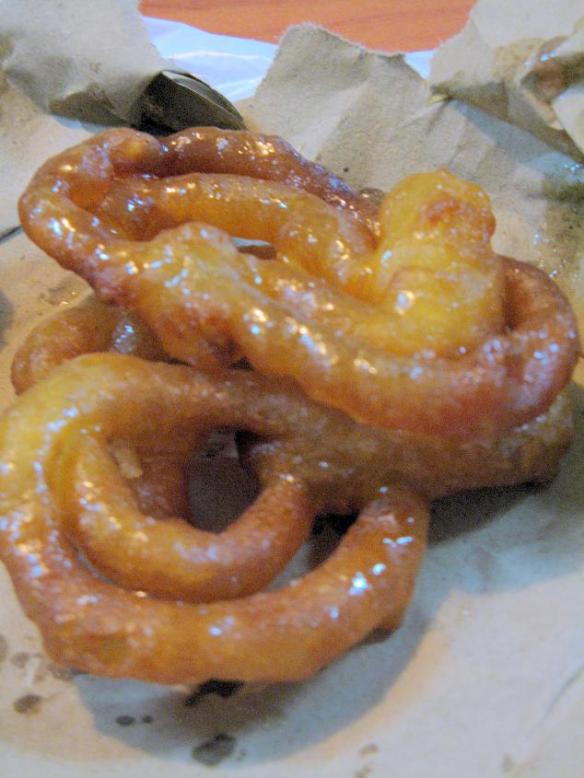I have recently moved back to Hong Kong, so expect some nice posts on the wealth of great Asian food that you can get in this city soon. I’ve already started exploring some of the new restaurants that have sprung up while I was back in the UK. But because I’ve also just moved into a new place, with a nice shiny new kitchen, I thought I’d see how easy it’d be to reproduce a Nigel Slater classic that I’ve cooked many times before in this foreign location.
Take two chicken thighs (Wellcome in Hong Kong has these for HK$20). Rub some olive oil into their skin and then season them with a fair bit of salt and pepper. Heat up a pool of oil in a large pan and drop in a big chunk of butter. Wait until the butter and oil start to bubble, then throw in the chicken – let it brown on both sides and then turn down the head. Take a few meaty cloves of garlic, press them down with a knife side until they split and throw them into the pot with the skin still on. Leave the chicken so it is just hissing slightly in the pan. Cook like this for a good forty minutes or so.
Then take the chicken and the garlic out of the pan and keep it warm. Pour some wine into the pan (the recipe really says you should use white wine, but I had some red left over from a past meal and it seemed to work well too). The wine will de-glaze the pan, taking up all the fat that is stuck to the bottom and absorbing all the bits left over from the chicken. Simmer it for a while to boil off the alcohol and reduce this gravy. Throw in some herbs – time if you can get it, or rosemary in my case.
I’d say it’s best to serve this with mash of some kind to soak up this nice gravy. I made standard mashed potato that has a nice earthy texture to compliment the crisp and slight oiliness of the chicken flesh. I think that sweet potato mash would also work well. Anyway, all in all, a nice simple dish, and easy to produce even in Hong Kong with limited resources and ingredients.

















